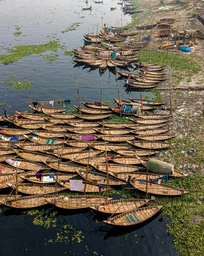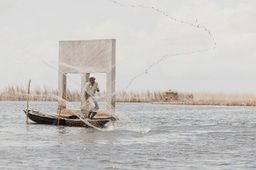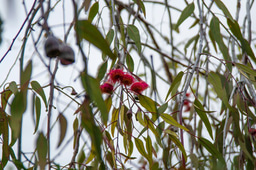Conservation and Human Rights: an introduction
Conservation and Human Rights: an introduction
Authors: Helen Newing, Justin Kenrick, Helen Tugendhat, Anouska Perram,Tom Rowley, Cathal Doyle, Lassana Kone, Catherine Long, Adam Lunn, Amelia Arreguin Prado, Lucy Radford and Stephanie Brittain.
This guidance is intended as a resource for conservation professionals who are interested to learn more about the relationship between conservation and human rights, especially the rights of Indigenous peoples and local communities. A huge amount has been written on this topic over the past 50 years or so, but much of it is at the level of broad principles rather than their application in practice, and it is mostly targeted at large conservation organisations rather than at individual conservationists. Training opportunities on this topic are also limited, and awareness of human rights issues is currently very variable amongst conservationists. This document aims to help address this gap.
The full report is also available on WildHub in Spanish and French
Read the summary and conclusion in English, Spanish and French
Conservation and human rights have had an uneasy history. Ever since the emergence of the modern ‘western’ concept of conservation in the late nineteenth Century, a central strategy has been the establishment of a network of uninhabited protected areas to ensure the preservation of ‘natural’ landscapes, ecosystems, habitats, and the species they contain, through protection against any human exploitation. This approach, which is often referred to as fortress conservation, has formed the basis of emerging global conservation policy since the mid-twentieth Century. Fortress conservation has devastating impacts on the rights, livelihoods and cultures of Indigenous peoples and local communities, yet despite numerous commitments by conservation organisations to respect rights and shift to more inclusive approaches, forced evictions and violent killings are (still) commonly perpetrated across the world in the name of conservation.
The guidance is in three Parts:
Part 1 introduces the commitments made by governments in 2022 to adopt a rights-based approach to conservation, as part of the Kunming-Montreal Global Biodiversity Framework. It then gives a brief introduction to human rights and human rights-based approaches.
Part 2 provides an overview of international norms and standards on human rights. It describes the international legal and policy framework, introduces some of the most influential international voluntary standards addressing human rights issues, and then provides a run-down of rights that are particularly relevant for conservation.
Part 3 introduces several practical tools and approaches for respecting, protecting and fulfilling the rights of Indigenous peoples and other groups with collective customary rights, showing how they apply to conservation. They include measures to guard against or remedy rights violations (“do no harm”) and measures to actively support rights-holders to conserve nature themselves.
“Conservationists should not think about human rights law as a framework that constrains their actions, but as one which can serve as a guide for how to do conservation well and effectively from the bottom up, in collaboration with Indigenous Peoples, local communities and other rights-holders – which also happens to be the most effective form of conservation,” said Anouska Perram from FPP, who is a contributing author.
The publication comes at a crucial time after nearly 200 countries reaffirmed their commitment to a human rights-based approach to conservation in 2022, when they adopted the Kunming-Montreal Global Biodiversity Framework at COP15. However, achieving this commitment will require a major transformation in how conservation is implemented—shifting from top-down conservation models to approaches that support locally-led conservation initiatives, which are more effective and equitable, as the guidance maintains.
"This guidance document represents a critical step in redressing the balance between traditional, state-protected areas and conservation efforts led by Indigenous Peoples and local communities," said Dr. Helen Newing from ICCS, who is one of the lead authors. "It will also help conservationists foster a rights-based approach to conservation, by improving their understanding of the application of international human rights norms and standards to conservation."
Key practical tools outlined in this guidance for conservation in partnership with Indigenous Peoples and local communities include:
- Social safeguard and human rights due diligence procedures
- Human rights impact assessments
- Free, prior, and informed consent processes
- Grievance mechanisms
- Support for remedy and restitution in conservation practices
In addition to protecting human rights, this guidance emphasises the importance of actively supporting rights-holders in fulfilling their rights. In light of this, it includes several tools for supporting rights-holders to protect and conserve their lands, territories and biodiversity - including by reconciling past and current injustices and by mapping and monitoring their own lands and biodiversity.
“Long-term, generationally successful conservation requires that the rights that individuals and groups hold to their lands, territories and resources are recognised and protected, and that their self-determined and locally-led efforts to protect and conserve those areas are supported - financially, technically and politically. Rather than passive recipients of external interventions, Indigenous Peoples and local communities are custodians and stewards of their lands, territories and resources and active in their defence,” states Helen Tugendhat from FPP, who is a contributing author to the guidance.
The Conservation and Human Rights document marks a significant step towards building a more inclusive and equitable future for conservation, aligning with international commitments and offering a pathway to better outcomes for both biodiversity and the communities that depend on it.





Please sign in or register for FREE
If you are a registered user on WildHub, please sign in